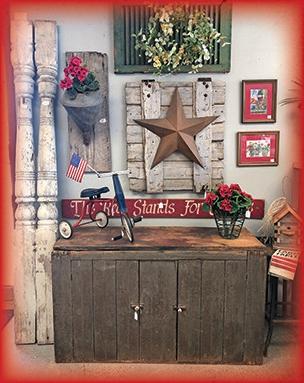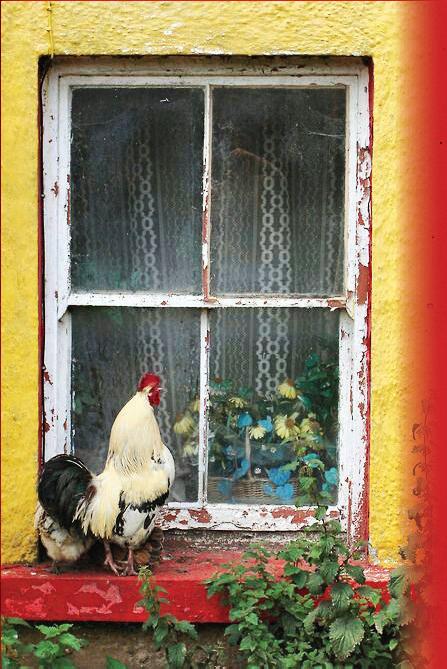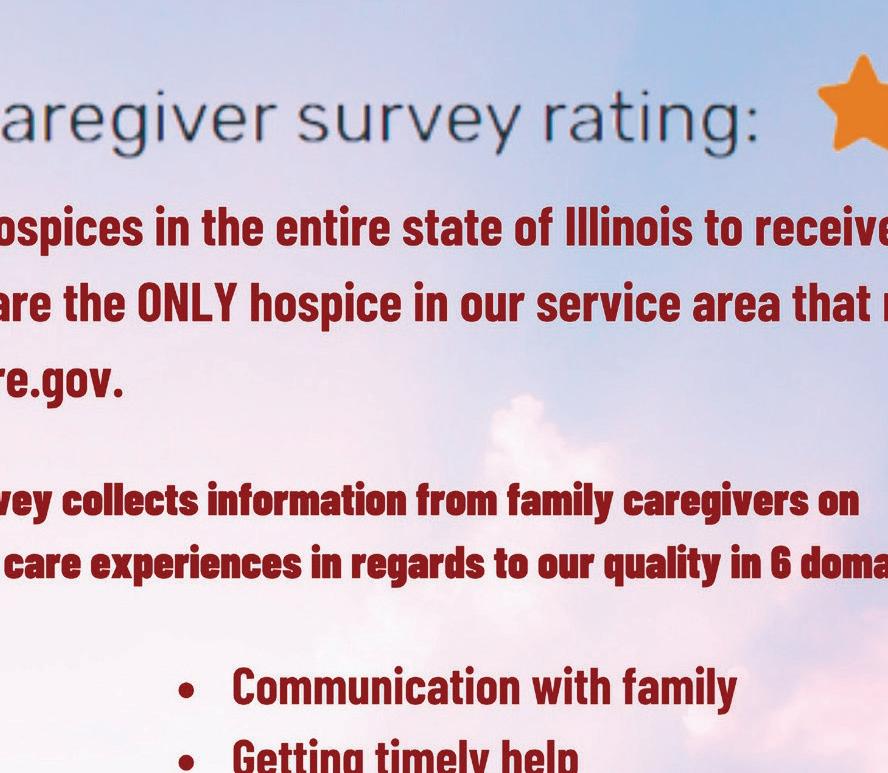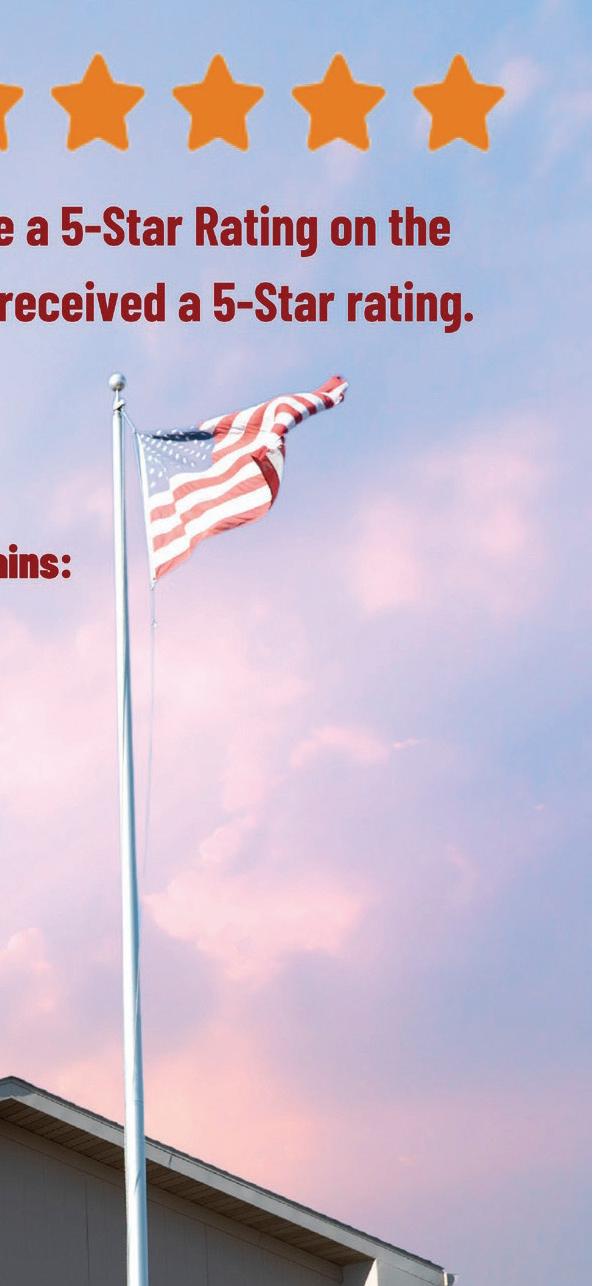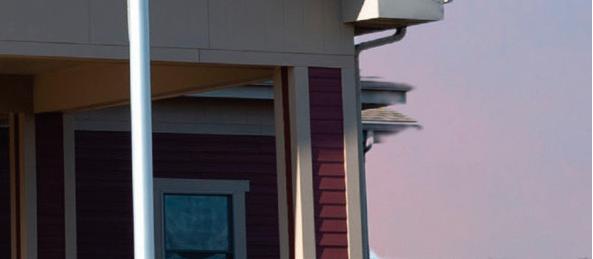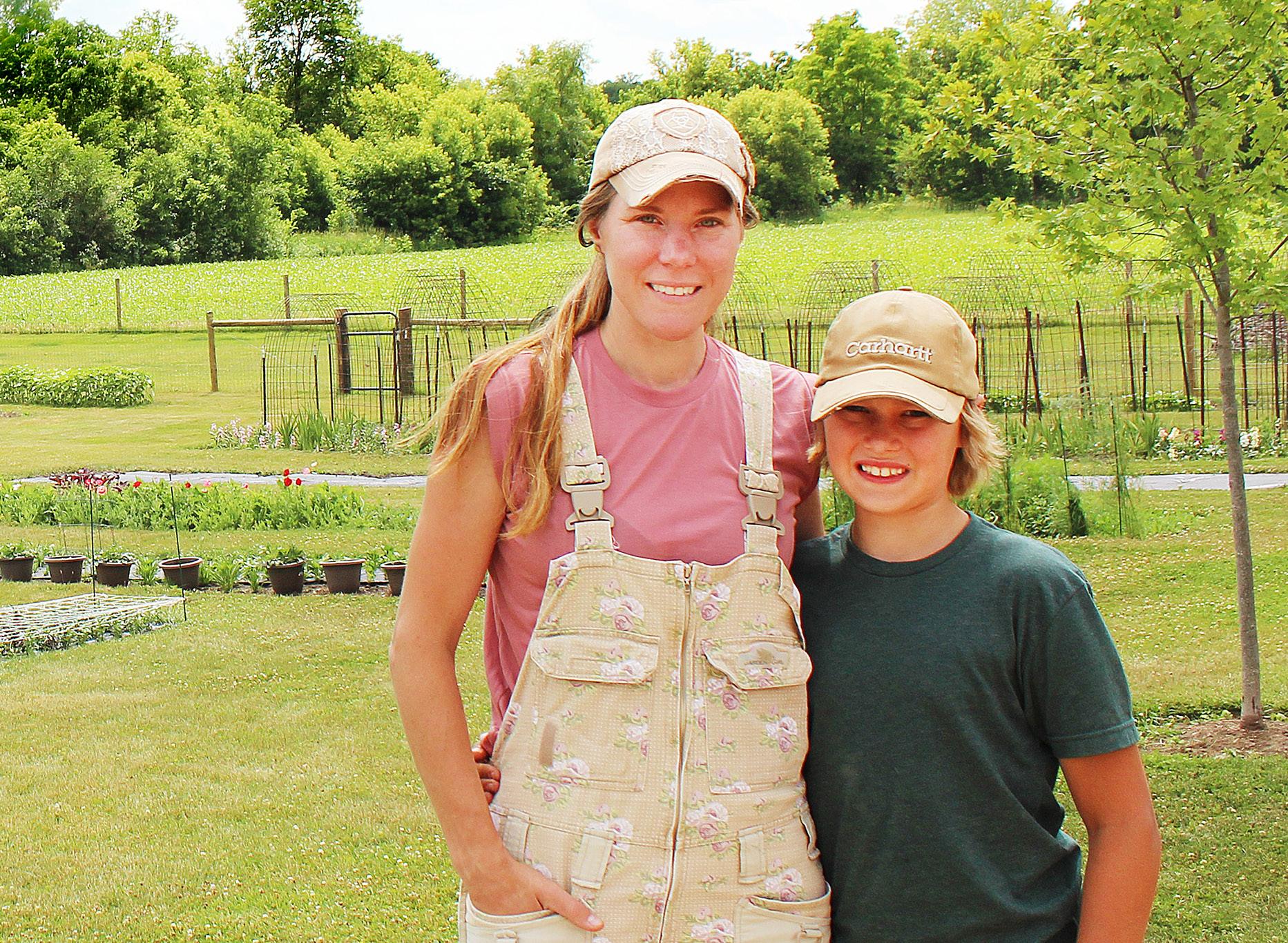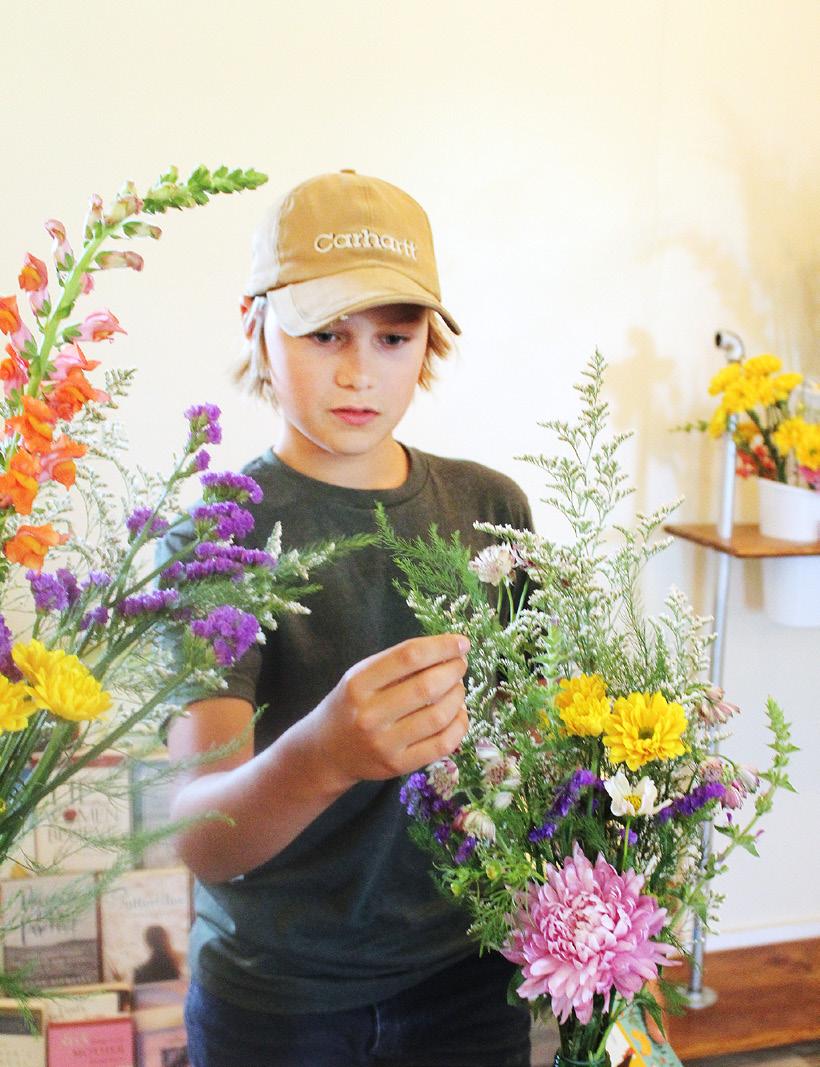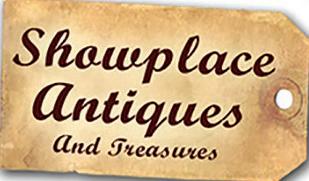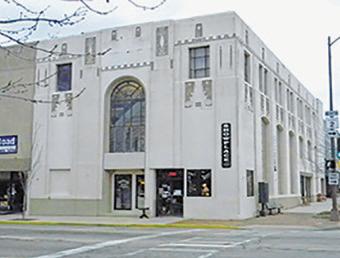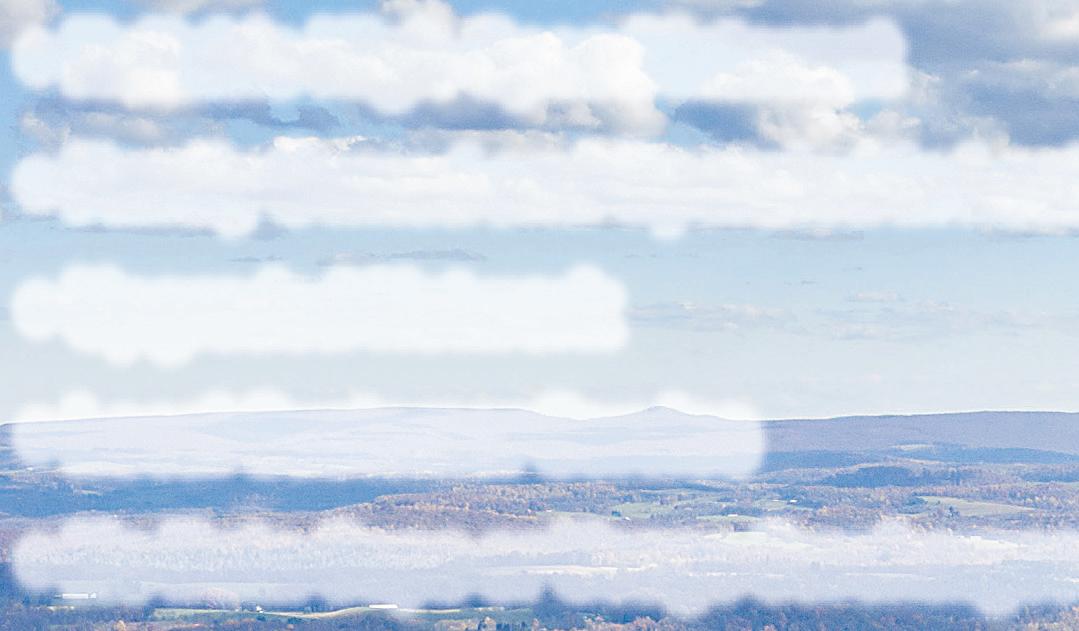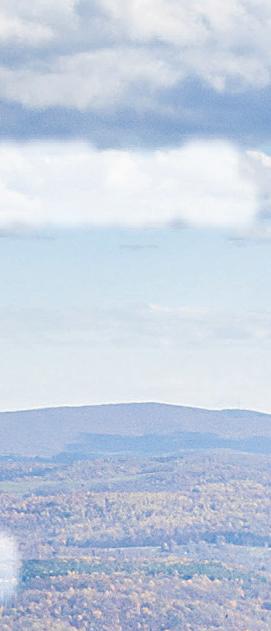BOOK ’EM
If Vito Colucci’s life reads like a true crime story, that’s because it is.
The Byron resident is a policeman turned private eye turned author whose work helped turn a routine arrest into a catalyst for a national effort to fight organized crime PAGE 6
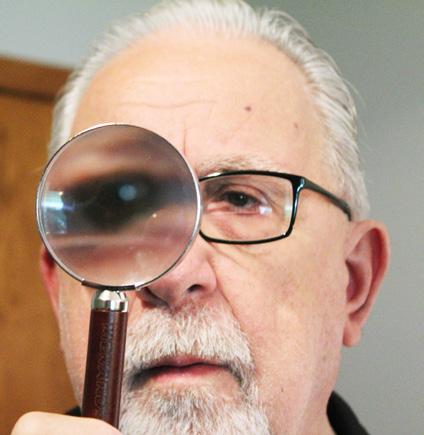



Cartons - Milk, Juice, Broth, Soup & Other









Publisher/Ad

4

Contact Jill Reyna at 815-631-8774 or jreyna@saukvalley.com






6 Book ‘em
Articles and advertisements are the property of Sauk Valley Media. No portion of Ogle County Living may be reproduced without the written consent of the publisher. Ad content is not the responsibility of Sauk Valley Media. The information in this magazine is believed to be accurate; however, Sauk Valley Media cannot and does not guarantee its accuracy. Sauk Valley Media cannot and will not be held liable for the quality or performance of goods and services provided by advertisers listed in any portion of this magazine.

If Vito Colucci’s life reads like a true crime story, that’s because it is. The Byron resident is a policeman turned private eye turned author whose work helped turn a routine arrest into a catalyst for a national effort to fight organized crime.
Sounds like fun in Ogle County
Crunch! Oof! Weee! What’s all the noise? The county fair!
16
An Island of serenity
For a local business owner, the best learning environment is the environment, and he’s inviting people to discover what nature has to teach that’s in a place a world away — and right in our backyard. 26
Oregon’s got talent
Organizers of a museum signed on the dotted line of a new lease on life for a former community center that’s given the arts a home.
34 A budding young farmer
With only three candles on his birthday cake, Buddy Murray had already decided what he wanted for his next birthday: To be a farmer, and he got his wish at a dandy little farm.
Jacob Beyer of Texas hits the ground after being thrown from a bucking bronco in the saddle broncs competition during the afternoon session of the Bog Hat Rodeo on Aug. 4. This year’s fair ran Aug. 2-6. Go to oglecountyfair.com for more information.



 Left: Ava Jones of Dixon smiles as she rides the swings Aug. 5.
Right: Shelly Denton of Oregon and her son Seth head down the Super Slide on Aug. 6.
Left: Ava Jones of Dixon smiles as she rides the swings Aug. 5.
Right: Shelly Denton of Oregon and her son Seth head down the Super Slide on Aug. 6.
Serafina gets a little relief from the heat Aug. 4, thanks to Paisley Harbaugh of Chana, who used a battery-operated fan to cool down her sister Emily’s 8-month brown Swiss calf.











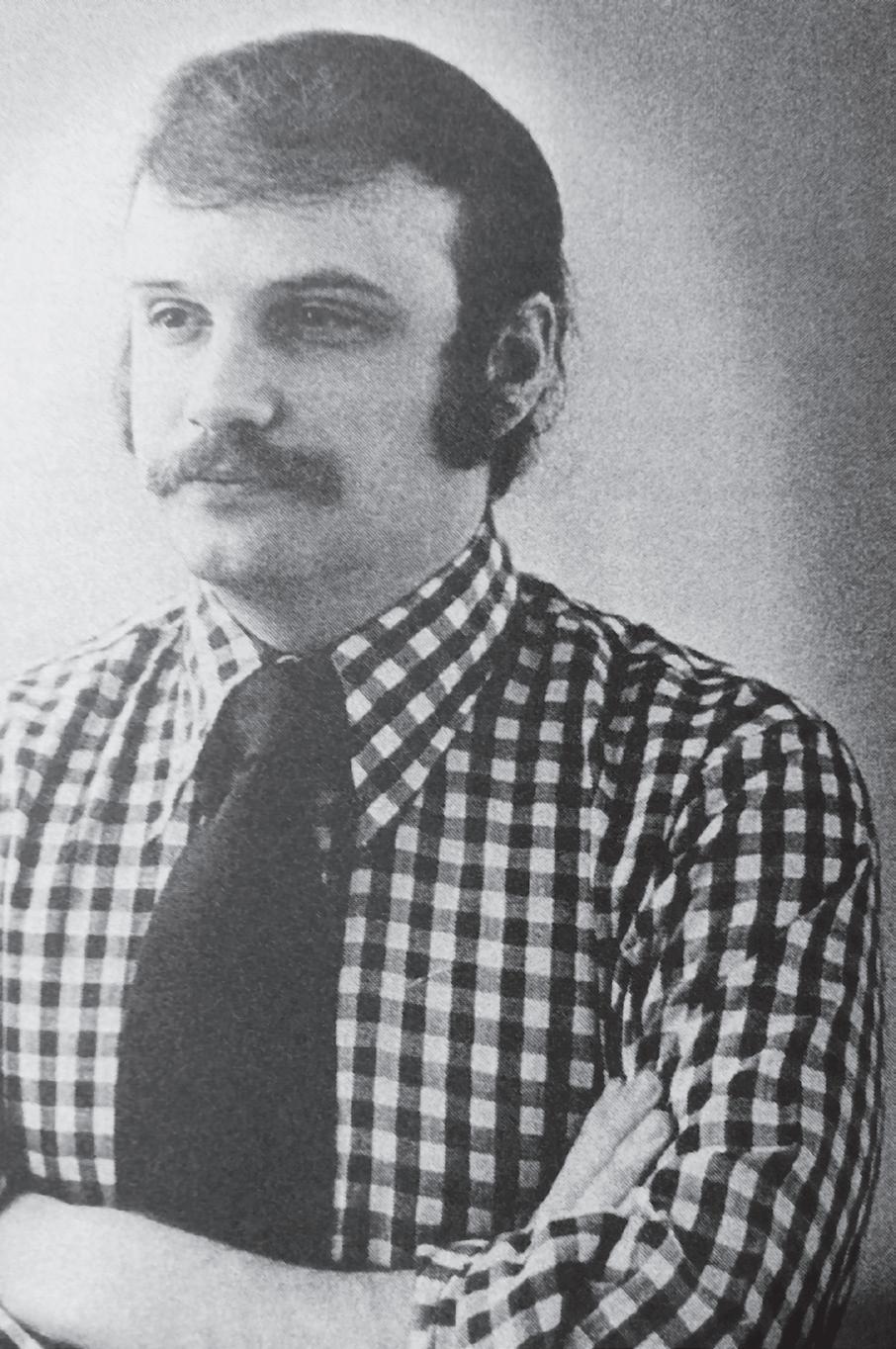


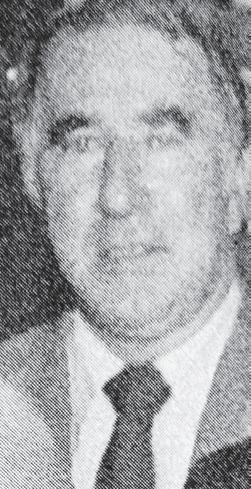
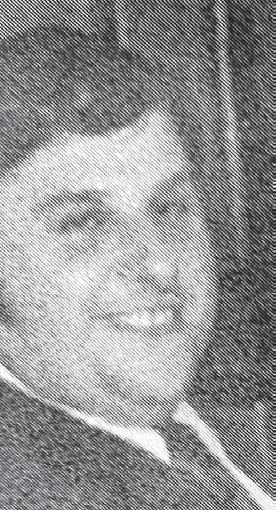
ifty years ago, Vito Colucci could have turned his patrol car onto any street in Stamford, Connecticut, but it was the one he turned down that led to a series of events that would change not only his life but the city he’d sworn to serve and protect, and eventually help lead to a national effort to root out corruption and organized crime.

The young officer and his partner couldn’t have foreseen it then, but it really was a turn for the better.
nnn
Colucci, 75, has a mountain of stories to tell from more than 50 years of working in criminal justice, and today he’s telling those stories from a city not far from the hometown of a President who shared his commitment to fighting crime.
Having moved to Byron a couple of years ago to be close to family, Colucci recently found time to expand upon a book he wrote a few years ago, “Rogue Town,” (co-authored by Dennis N. Griffin) to include even more stories from his days behind the badge at the Stamford Police, and his time working as a high-profile private investigator.
The second edition of “Rogue Town” (on sale online or through Colucci himself; details on page 15) is a tale of crime and corruption — the story of a battle that began in what was once one of the most corrupt cities in the country, and would have an impact in one of the most powerful cities in the world.
COLUCCI cont’d to page 8

If Vito Colucci’s life reads like a true crime story, that’s because it is ...
The Byron resident is a policeman turned private eye turned author whose work helped turn a routine arrest into a catalyst for a national effort to fight organized crime
While Colucci draws on his own experiences for “Rogue Town,” he’s far from the only star. His book also shines a spotlight on and pays tribute to the efforts of his longtime patrol partner, Joe Ligi, as well as reporter Anthony Dolan, President Ronald Reagan and others who fought the good fight — a fight that culminated in Reagan’s increase in organized crime crackdowns in the early 1980s, and infiltration of the Genovese and Gambino crime families.


“The whole thing wasn’t just me, but Anthony Dolan, my partner Joe and everyone else,” Colucci said. “Here are guys that changed it all in the fight against organized crime. Reagan set up more than 500 new prosecutors. For the years that the police were always behind in fighting organized crime, first it brought them even in the fight. Then they got ahead.”
Stamford is about an hour’s drive along the Long Island Sound shore northeast from New York City. During the 1960s, it was home to the third largest Vito Colucci spent more than 50 years as a police officer and private investigator. His book, “Rogue Town,” was recently expanded for a second edition.



number of Fortune 500 companies, and organized crime wanted a piece of their action, Colucci said — and they got it. Criminals not only got to many executives, but community leaders as well.










Growing up in Stamford, Colucci didn’t know how serious the organized crime problem was in his hometown until he joined the police department as a 21 year old in 1969. The son of a special (auxiliary) cop, Vito Colucci, Sr., he previously worked as a musician and gave guitar lessons until the jobs dried up. He worked on patrol and on the narcotics division during his nearly two decades in the department, and survived a shootout in 1971 that earned him the Combat Cross.



“I didn’t know anything until I hit the police department,” Colucci said. “Stamford had always been a town of about 130,000 to 140,000 people. I didn’t know any of that stuff. The cops filled me in. I hated corruption. Hated it. I wanted to do something about it. It was horrible. From the mayors to the police commissioners, there was corruption going on.”

In those days, it was risky to speak out and say the wrong thing in front of anyone — no one quite knew who was in or out with organized crime, but there certainly were suspicions. The mantra then was to simply keep your mouth shut and do your job, or else something bad would happen to you. For the people in organized crime, that silence was golden. The less people said, the more criminals could get away with.
A reminder of what fear can do hangs on a wall in Colucci’s home office in Byron — a quote from the Dixon-born Reagan, who said: “Evil is powerless if the good are unafraid.”
“Back then, everybody was afraid,” Colucci said. “People were afraid and didn’t want to bother anyone. Wives would say to their husbands, ‘Don’t go calling this guy up because we don’t want no problems. Let it go. We had nothing to do with that.’ It was good, honest people making these points to leave it alone.” But there were people who didn’t want to leave things alone.

Arvil Chapman was one of those people. He wasn’t afraid to spill the beans, but he was afraid of going back to jail.
It was Chapman who Colucci and Ligi came across while on night patrol during the early 1970s. Colucci was driving when Ligi spotted Chapman.

“We’re driving down the street, and my partner goes, ‘That’s Arvil Chapman, move over, we’ve got warrants for him,’” Colucci said. “He knew more of the guys and I was still learning them. We pulled over, put him under arrest, and put him in the back seat. It was about 10 o’clock that night, and we start driving toward headquarters.”


It was then that Chapman dropped a bombshell.
Having been in and out of jail a few times, Chapman was adamant that he didn’t want to go back, Colucci said.
Colucci recalls: “He said, ‘Joe! Joe! If I give you something really, really big, can you talk to the prosecutor? I can’t afford to go to jail again.’”
“We’re all ears,” Colucci replied. nnn
Colucci said Chapman told them that their boss, Larry Hogan, and [his sergeant] Duke Morris, were running the whole drug and organized crime throughout the whole county and whole state.
“So I pulled into a place called PitneyBowes, I pulled way in the back, and we proceeded to be there until, I think it was 4:15 in the morning. We just talked, and this was earth-shattering.”
Hogan was Colucci’s lieutenant on the narcotics squad. While behind his desk at the Stamford Police Department, Hogan had engaged in mob activity and operated one of the biggest drug rings
along Connecticut’s Gold Coast.
There were rumors about Hogan at the time and now those rumors had legs — but proving them was going to be tricky. Speaking out was a problem: Who could be trusted to bring Hogan down? Too many members of law enforcement upper management were in cahoots with the mob.
“He could do anything he wanted to,” Colucci said. “If you were a major drug dealer, he could tell you, ‘Just give me $800 a week, and no one’s going to bother you.’ He was a really, really evil man. He didn’t care.”
That’s when another turn of events took things in another direction.
nnn
Not long after Chapman’s arrest, the Stamford Advocate newspaper hired Anthony Dolan as a police beat reporter. It didn’t take Dolan long to understand what was going on in town. He had a nose for news and it smelled corruption.
“He hammered away and hammered away,” Colucci said. “He had death threats. He had an apartment and someone threw a rock through his window with a note stuck to it, something like ‘Get out of town, we’re going to kill you.’ All of that went on, and he wrote 75 articles about all of this stuff, because everyone was calling him. The people who were formerly afraid, they just had to tell him and not give their name or number or anything.”
COLUCCI cont’d to page 12

www.fsbshannon-polo.com



“He could do anything he wanted to. If you were a major drug dealer, he could tell you, ‘Just give me $800 a week, and no one’s going to bother you.’ HE WAS A REALLY, REALLY EVIL MAN. He didn’t care.”
Colucci would also help Dolan, feeding him information, anonymously, from a pay phone.
Dolan would go on to play a major role in “Rogue Town,” and Colucci would pay tribute in the book to the intrepid reporter who helped find the reality behind the rumors.








“If Anthony Dolan didn’t move to Stamford to take that job, I’d have no idea what that town would look like today,” Colucci said. “He knew what was going on. He would work his eight hours at the Advocate, and then he would do his ‘Larry Hogan time’ for hours. Me and Joe Ligi would work for hours and then do our ‘Larry Hogan time.’”





Hogan would eventually be ousted from his position when Victor Cizanckas took over as police chief in 1977. Cizanckas, who came from California, sought to clean up the department and he took special notice of Dolan’s articles and fired Hogan.
“He called Larry Hogan in. ‘You’re out. Put everything down, and get out of here. You’re not here anymore,’” Colucci said. “A week later, he calls me to the office. It’s never a party and balloons when the chief of police calls you in to see you. He knew who I was and what I worked.”





The meeting led to a plan: Colucci put in a fake resignation letter, and as a “disgruntled cop,” gained access to many places where the criminal action was. His efforts would help bring several people down, but his cover eventually was blown when a secretary in the city’s payroll department unwittingly admitted that she still processed Colucci’s paychecks.







You realize that there are a few bad apples, and they spoil the whole bunch. It just takes one person to stand up and say, ‘I’ll do something,’ or, ‘I’ll do what I can.’
ONE PERSON CAN MAKE A DIFFERENCE.”
CODYCUTTER/CCUTTER@SHAWMEDIA.COM
While Colucci’s involvement in the case winds down at that point, Dolan’s career began to thrive. He won a Pulitzer Prize for his reporting on Stamford’s corruption in 1978, and later was hired as Ronald Reagan’s chief speechwriter. With Dolan’s influence, Reagan would come to see that crime in the U.S. was “an epidemic,” as he said in a speech on Oct. 14, 1982, when he declared a war on drugs and organized crime.
As far as Hogan’s ultimate fate goes, Colucci did not directly bring him down while undercover but gathered enough information about him that law enforcement could use to link him to other crimes. Ultimately, Hogan was indicted in 1984 on a 1980 murder charge of a drug courier and died of brain cancer while awaiting trial.
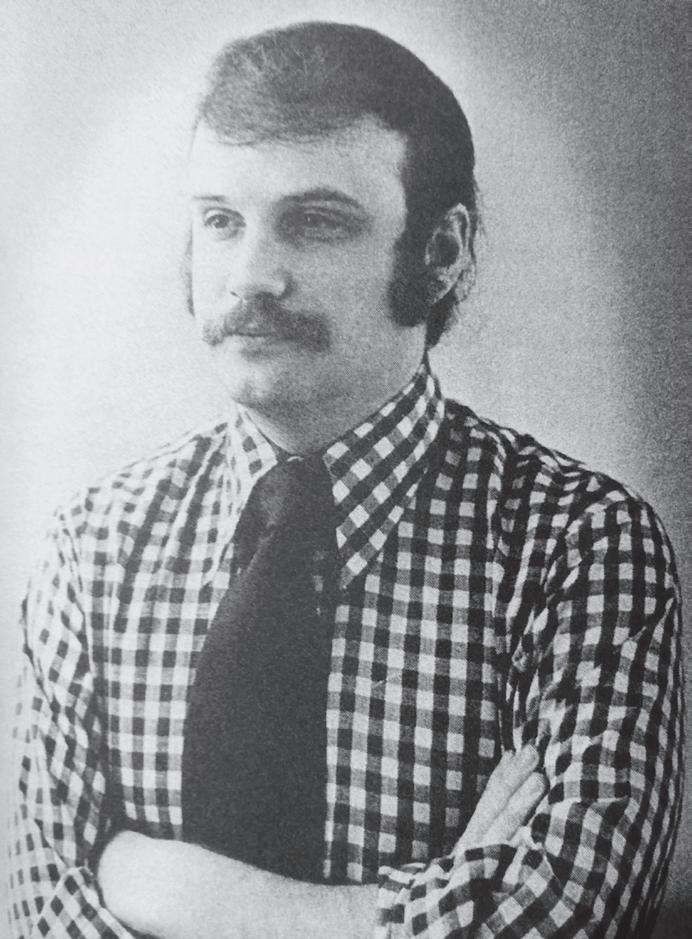
“Good people came around back then,” Colucci said. “Evil is powerless if the good people aren’t afraid. That goes a long way. People became unafraid to talk. Reagan was president back then, and that’s what he stood for.”


Colucci, meanwhile, left the police department and became a private investigator in 1990, opening his own agency, Colucci Investigations, which counted among its clients some famous names, including pop singer Michael Bolton and actor Woody Allen. He also played a hand in guiding Michael Skakel through his high-profile murder case.


Skakel, a nephew of Robert and Ethel Kennedy, was convicted of Martha Moxley’s murder in 2002 and sentenced to prison. He was granted a new trial in 2013, and the Connecticut Supreme Court ruled in 2016 to reinstate the conviction, but later reversed that decision and ordered a new trial. In 2020 the state said it would not retry Skakel.
nnn














The newest edition of “Rogue Town” highlights some of the cases he worked on as a PI, and ties up some loose ends on people in his police past.




COLUCCI cont’d from page 14











The original version of “Rogue Town” was written in 2013. After surviving a serious illness in 2022, he updated the book for a re-release this past May. He also makes regular media appearances on television and podcasts. Sharing his experiences in “Rogue Town” is like getting a lot out of his head and out to the public, he said. He’s also the author of 2007’s “Inside The Eyes of a Private Eye.”

Colucci has largely retired from investigating since moving to Byron, but continues to own Colucci Investigations, with his staff back in Stamford. He has enjoyed getting to know the area and spending time with his wife Joanne, daughter Valarie Cortese and son-in-law Gary Cortese, who is a pastor at Beacon Hill Assembly of God in Byron and a Byron Police chaplain.

Gary, who also is from Stamford, heard many of his father-



in-law’s stories, as well as those from his grandfather, through the years, and like them, believes that it takes courage to step forward and do the right thing.

“I always knew from my grandfather that there was a whole different side to this,” Cortese said. “You realize that there are a few bad apples, and they spoil the whole bunch. It just takes one person to stand up and say, ‘I’ll do something,’ or, ‘I’ll do what I can.’ One person can make a difference. That was profound for me, but troubling, too, because of the corruption and the things that were done in the name of whatever — greed or power. This is the reality of our world, and the only way to rise above it is that one person takes a step forward.”
Or a turn down the right street.
“If we had went down a different street and [Chapman] had gotten arrested another way, a lot of these things maybe wouldn’t have happened. When Arvil told me all of that, and when I went ‘I’m all ears,’ that changed everything for us. If that doesn’t happen, who knows? If we didn’t arrest Arvil Chapman, we may never know what happened.”n Cody Cutter can be reached at 815-632-2532 or ccutter@shawmedia.com.




ou could measure Tim Benedict’s office space in acres. It doesn’t have any walls and the only ceiling he sees is miles away. It’s the kind of job where he doesn’t mind and why would he? He’s works at a “really special place” that has to be seen to believed, and he’s inviting you to see it.



Appreciating the world around us runs in the family for Benedict, beginning with his grandparents and later his parents. It’s a family trip that’s taken him around the world, and brought him back to his family’s roots near Oregon.
SERENITY cont’d to page 18
SERENITY cont’d from page 17

The son and grandson of anthropologists, Benedict enjoys both living off the land and making a living off of it. He owns Orion Organics, nestled within an enclave of Nachusa Grasslands, with an aviary and garden; and also owns Goose Island Cabin, a wooded vacation rental cabin property along the east bank of the Rock River south of Lowden-Miller State Forest.
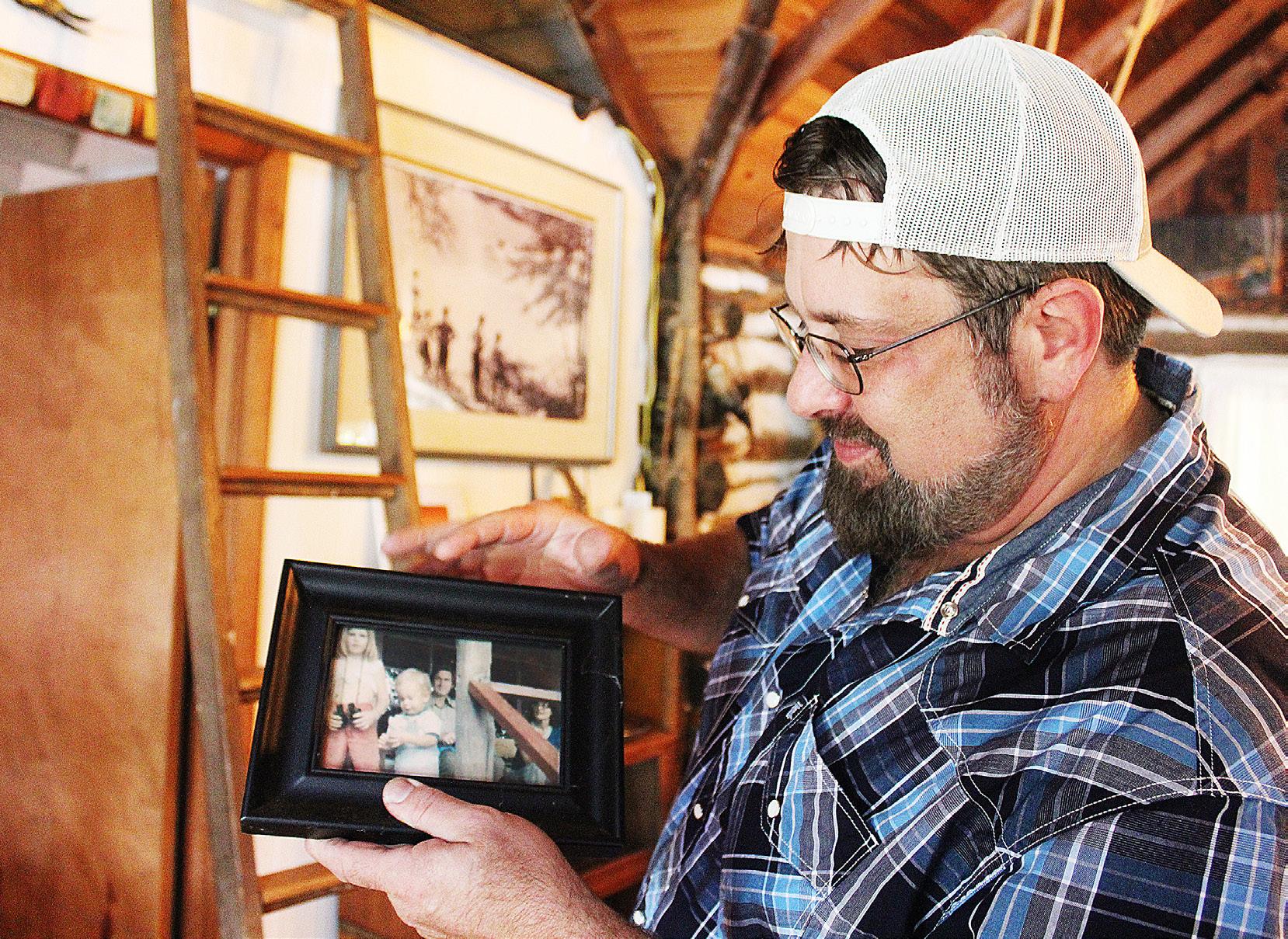
It’s not the kind of living that makes him rich, he says, but it is enriching.
















“What I really enjoy is getting people out to experience rural Illinois,” Benedict said. “It’s easy to take for granted where we live. It’s done wonders for a lot of people just to get out.”

Benedict’s grandfather, Albert Dahlberg, was a dental anthropologist with the University of Chicago; he and his wife Thelma purchased what’s now called the one-story cabin in 1950 as a getaway from the hustle and bustle of the big city, and later moved to property near Nachusa Grasslands to live out their remaining days.




SERENITY cont’d to page 19
Tim Benedict’s appreciation for the land and the history it holds has long been a part of his life. Both his grandfather and his mother were anthropologists, piecing together a picture of the past from clues unearthed during their travels. Today, he’s helping others not only appreciate the land, but learn from it. “Once I got to taking care of this land, I came to realize the Indian history here,” Benedict said. “I try to impart that to guests that that’s whose land we are on — and impart some respect for it.” Here, Tim holds a picture of himself as a child while staying at Goose Island Cabin with his grandparents.
SERENITY cont’d from page 18
Dahlberg’s daughter, Cordelia, also became an anthropologist, and she and her husband, Peter Benedict, traveled the world to find and preserve ancient relics. During their journey, Tim was born in Beirut, Lebanon, and followed his parents to Egypt, Mauritania, Niger, Cameroon, Zimbabwe and Brazil before settling in the United States about 25 years ago, and at his grandparent’s home for the past decade.
Benedict was involved in jaguar conservation in Brazil and elephant conservation in Cameroon, educating himself in the lives of plants, animals and people. In most places along his journeys, all people had to live off of was whatever nature provided. It was that organic approach to living that he brought with him to America: If other cultures could get so much out of nature, why couldn’t we?
SERENITY cont’d to page 20
CODY CUTTER/CCUTTER@SHAWMEDIA.COM

Among the guests Benedict has welcomed to his cabin retreat are families from the Chicago area whose children have never seen just how great the great outdoors can be. “They had never been out of the city,” he said, and their time at the cabin has been a life-changing experience. “It’s so beautiful! I’ve only seen this on TV,” one child said.

Since making the Rock River Valley home, Benedict has worked with youth organizations throughout the state to help educate them about nature and appreciate the beauty that surrounds us. In a world where many cling to electronic devices just to get through the day, Benedict has enjoyed seeing the excitement and newfound appreciation in the kids who stay at Goose Island Cabin with their families.

“So many kids aren’t given the chance to be creative, or get dirty, or use their imagination,” Benedict said. “Here, when you get in nature, without WiFi, they get to figure it out pretty quickly. Kids have it in them, they just need to get out in that environment.”
He’s has hosted families from the Chicago area whose children have never been outside the city or suburbs before. He once brought a YMCA group from Chicago down to the cabin, with a brief detour at the Black Hawk statue in Oregon.
“That 24 hours seriously changed some of the kids’ lives. They had never been out of the city. We first got off of the bus at the Lorado Taft Campus [of Northern Illinois University] and set up a day of team building. When we came out of the woods to see the statue, you can see the hills on the other side of the river, and I heard one girl go: ‘The mountains! The mountains! I finally get to see the mountains!’ Some other girls said: ‘It’s so beautiful! I’ve only seen this on TV.’ This was two hours from downtown Chicago, and I wanted to get more of them out here.”
The cabin was built in 1907 by early settlers, and brothers, Jacob and Andrew Hoff. When the Dahlbergs bought it in 1950, they often invited their professional friends over to enjoy the area’s scenery. One notable friend was scientist James Watson, who discovered double-helix DNA with Francis Crick in 1953. Watson also was an avid birdwatcher, and his original hand-written bird list from his visits to the cabin are still there. Notably missing from Watson’s list are eagles and hawks, the list having been compiled when the chemical DDT was wreaking havoc on the bird population. The Goose Island name, Benedict said, comes from the many geese who fly and flock along the river and on an island in front of the cabin.
SERENITY cont’d to page 22
In addition to cabin rentals, Benedict also sells honey harvested from his hives and garlic raised on his farm, through Orion Organics. He sells his honey through small retail shops throughout northern Illinois, as well as taking his honey and garlic to farmers markets in Oregon and Dixon. Honey is also available at a roadside stand outside his home.









These days, the cabin’s making a name for itself online, where Benedict describes it on is Airbnb page as offering “plenty of dust, dirt, squeaky floorboards and a tiny shower. If you’re still reading, it also offers authentic charm, serenity, private riverfront, 2,500 acres of forest, eagles, deer, stunning sunsets from the porch and a friendly beekeeper host.” There’s plenty of firewood for the fireplace, or a bonfire under the stars, canoes are available for a lazy trip down the river, and guests can catch some shuteye in the hammocks.




It’s more than just dust and dirt: the cabin has been modernized in recent years to include electricity, hot water, a bathroom, and a kitchen — but no TV or WiFi. Beds are placed in the living room, a loft area, and a separate bedroom. If you need to warm up or cool down, fans and space heaters are available. You can also pass the time with board games, books and outdoor games.
Nearly all of the rental fees are put back into maintaining the cabin and grounds, with an eye toward retaining the look and feel as when his grandparents owned it. When Benedict took ownership about 10 years ago, the cabin “was falling down,” he said, and he sought to not only preserve the cabin — shoring up walls, repairing the roof, improving drainage — but his family’s passion for the great outdoors.



SERENITY cont’d to page 24

Goose Island Cabin has been in Benedict’s family for more 70 years. His grandparents bought it in 1950 as a private getaway. Today, Tim has transformed it into a place where others can get away, too. Though some concessions have been made to update the cabin with modern amenities, it remains largely unchanged from the way it was when it first became part of the family — rustic, warm and welcoming. You can whip up something to eat in the fully equipped kitchen, play one of the games or read one of the books on the shelves, and enjoy some rest and relaxation in one of three beds: one in the living room, one in the bedroom and one in a loft accessible by ladder.
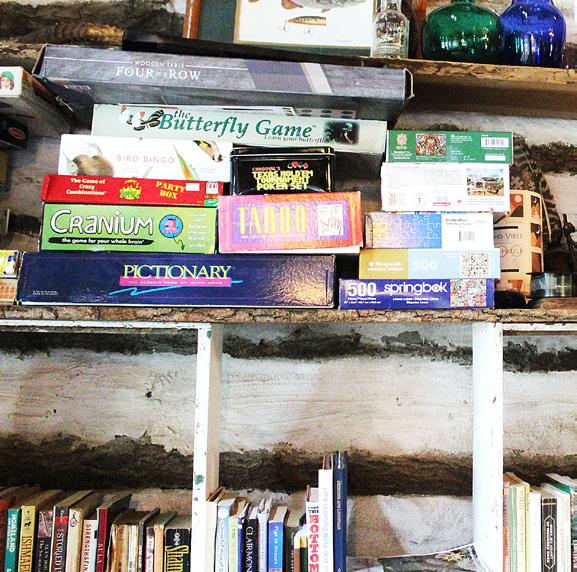



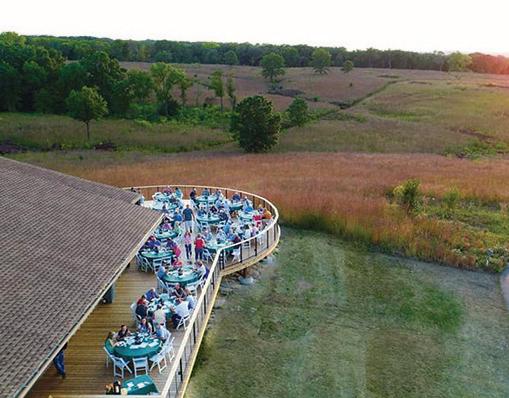







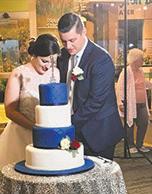





“I just wanted to rent it out a little bit to pay for the repairs,” he said. “Every year, what comes in goes back into the cabin, so it’s kind of a way to preserve history while bringing people out and being immersed into it.”

Benedict gas gotten a hand from Garrett and Emily Barnas, who’ve help through their home renovation business, E + G Interiors of Oregon. Goose Island Cabin was one of the Barnas’ first projects, and they struck up a friendship with Benedict during their work.


“We called it the guinea pig, just to see if we really enjoyed doing this,” Emily said, and they did. “We love doing this. We really related to Tim and the vision he had and for what he wanted to create out here. You feel like you’re a world away from the city, and you
kind of always feel like you’re on vacation out here. It’s a really special place.”
The trio also built a smaller cabin recently, just south of the main cabin — 12 feet square with a queen bed and twin patio doors that look out toward the river and offer a stunning view of sunsets.
“It’s so peaceful, and the sounds of nature — the birds, the water — it does something special to you. It’s kind of hard to put into words,” Garrett said. “Working with Tim, and working with Emily as a couple, it really gave us a lot of confidence.”


Benedict also has purchased a small tract of land north of the cabin site that he plans to develop into a handful of small camp sites to rent out.
Benedict is a hands-on owner who lives just a couple of miles away and welcomes each guest when they first arrive, going through the usual arrangement procedures, and giving them a history of the land, telling them of the Native Americans who once lived there, long before his grandparents and the Hoff Brothers.
About 20 years ago, Benedict developed a deeper appreciation for Native Americans’ history and traditions when he worked on Navajo and Hopi reservations in Arizona, helping tribal members cope with relocation efforts from a coal mining operation that sought to expand its operations on their longtime home.
SERENITY cont’d to page 25
That work he did and lessons he learned helped him appreciate the history of his own home’s land.
“Once I got to taking care of this land, I came to realize the Indian history here,” Benedict said. “I try to impart that to guests — that that’s whose land we are on — and impart some respect for it. It’s pretty untouched from time and memorial. It hasn’t been cultivated or logged. There’s that natural history, but also cultural history with the Sauk and Fox, and the Algonquin people living here. If it wasn’t for my time with the Navajo, I might not have had the reverence for the native history here.”
Benedict also invites guests to take a tour of the small farm where he and his mother live. That’s where his aviary of bees and hives of honey are at, as well as flower and garlic plots. He’s raised several varieties of garlic there for the past 20 years, with some coming from countries such as Italy and the Ukraine. His interest in collecting honey was influenced by the nearby bison that roam along Nachusa Grasslands property on four sides of his land.
The bison and grasslands have attracted more bees to make their way to the wildflowers. Benedict has planted a small plot of wildflowers near his driveway, where he also has a honey jar stand, and elsewhere on his property.
“The bees are intrinsically related to the bison,” Benedict said. “The bison generally eat the grasses, and it’s created more open space for the flowers and forbs.”
Benedict sells his honey through small retail shops throughout northern Illinois, as well as taking honey and garlic to farmer’s markets in Oregon and Dixon. And if anyone renting the cabin has a craving for either, they don’t have to look too far for someone who has plenty of it — and they may also enjoy an agri-tourism experience at the farm as well.
“When I moved here, no one else in my generation of my family wanted to live here. I was initially coming here to help my grandmother out, but then when I realized that I wanted to stay, I really wanted to make a living off of the land, especially with all of this [unique] property all around us on such organic soil.”
Benedict has worked at plenty of educational and environmental jobs throughout his journeys, and continues to be sought out by organizations for his expertise in all things nature.
“There are ways of making a living off of your land in a self-sustaining way,” he said. “I have to be pretty diversified to do that here.”
Cody Cutter can be reached at 815-632-2532 or ccutter@shawmedia.com.



Tim Benedict can be reached at farmtim@gmail.com.
Goose Island Cabins
Go to airbnb.com/h/ gooseislandcabin to book a reservation or for more information on Goose Island Cabin, located along the Rock River south of LowdenMiller Forest Preserve.
Orion Organics
When available, a honey stand is at 885 West Stone Barn Road, north of Nachusa Grasslands in rural Franklin Grove. Find it on Facebook or go to orion.farm for stand availability or for more information.


rom the city’s tallest resident to American’s tallest president, art looms large in Oregon.
It’s where a nearly 50-foot statue has stood for more than a century as an eternal testament to its creator’s talent; and as a new century dawned, it’s where a sculptor’s con victions helped him follow in the footsteps of Abraham Lincoln. The arts have long found a welcoming home here.

Now that home has an address.
The Coliseum Museum of Arts, Antiques and Americana opened in July in the town’s centuryold community center, and its rotating and per manent exhibits, as well as occasional classes and fine arts performances, promise to ignite a creative spark in anyone who visits — and its executive direc tor, Michael Glenn, says the place is full of not only surprises, but possibilities.

MUSEUM cont’d to page 29



Local artists have a showcase for their talents at the Coli seum Museum of Art, Antiques and Americana, like this piece: “Geezer,” by Dixon artist Betty Predmore. CODY CUTTER/CCUTTER@SHAWMEDIA.COM






MUSEUM cont’d from page 27
“We have a place where you’re going to be excited and surprised at what you see,” Glenn said. “You’ll also realize that you can’t see it all in one visit, and you’ll come back because there’s a lot to process in just one visit. If you’re local and have family or friends visiting, or you have a high school reunion, this is a place where you can bring people to show off some of the special places in the area. We want to keep that rotation going.”




Hundreds of unique pieces — paintings, sculptures, ceramics, pottery, glass, photos and more — are displayed throughout the museum, and some can even be purchases. Six rooms are dedicated to exhibits, and more works are displayed along the walls outside the rooms. Two rooms feature galleries named after two notable Oregon legends: Lorado Taft, who created “The Eternal Indian” concrete sculpture of Chief Black Hawk; and Gov. Frank O. Lowden, an Oregon resident who served as Illinois’ governor during World War I.
Permanent and on-loan work (as of mid-August) includes art glass, bronze sculptures, carved decoys, Crown Milano, Czech glass, Ephraim pottery, Fulper pottery, Native American art, Norse pottery, tramp art, treenware (wood dishes and other household utensils made by North America pioneers), Van Briggle pottery, and Rookwood pottery.
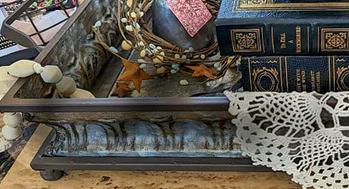

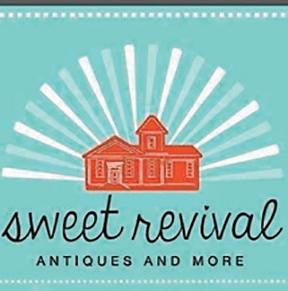
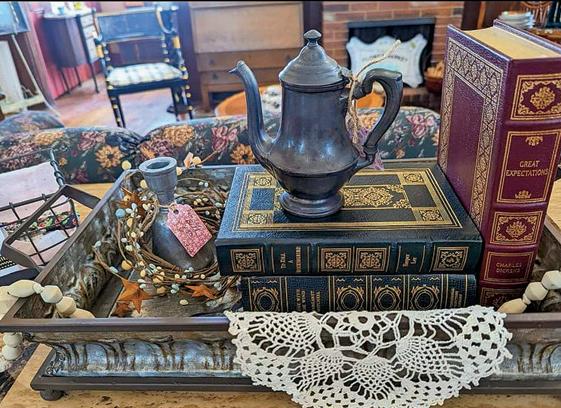


Performing arts will also have a home at the museum, where organizers plan to host the occasional concert or play on the Coliseum’s stage.
“It’s permanent and rotating art, but it’s more than just that; it’s an activity center for the community,” Glenn said. “We want to do literature, music, art, the whole package; and not just for adults, but also for kids and students. I like to have student art shows, and we have a lot of things in plan there. Maybe a student recital. There are lots of possibilities here.”
MUSEUM cont’d to page 30








Having a platform like the Coliseum helps local artists “rise to the occasion,” Glenn said, to create more and express themselves.


The Coliseum itself is an important piece of Oregon’s architectural art legacy, having opened a century ago, on Jan. 2, 1923. Throughout its history, the venue has hosted public events, concerts, dances, roller skating, basketball games and Grange meetings. As times changed and those kinds of events found a home in school gyms and other, larger venues, the Coliseum needed a new lease on life, and it found it with the museum.
“With the changing of times, technology and other structures being built, this was not being used much,” Glenn said. “There was even some discussion by people to raze the building. People put their craft into this, it’s not a cookie-cutter. Can you imagine the stories, if the walls and the floors could talk?”
If they could, one of the things they would say is, “Thank you for your service.”




One of the Coliseum’s hallmarks is the veteran’s honor roll wall above the original front entryway, featuring the names of soldiers from town who answered the call of duty during wartime.

Oregon native Craig Carpenter had several of his watercolor paintings exhibited in July and August at the Coliseum Museum of Arts, Antiques and Americana. Carpenter’s watercolor paintings depict scenes of everyday life in Oregon. “He’s like the Norman Rockwell of Oregon,” Michael Glenn said.
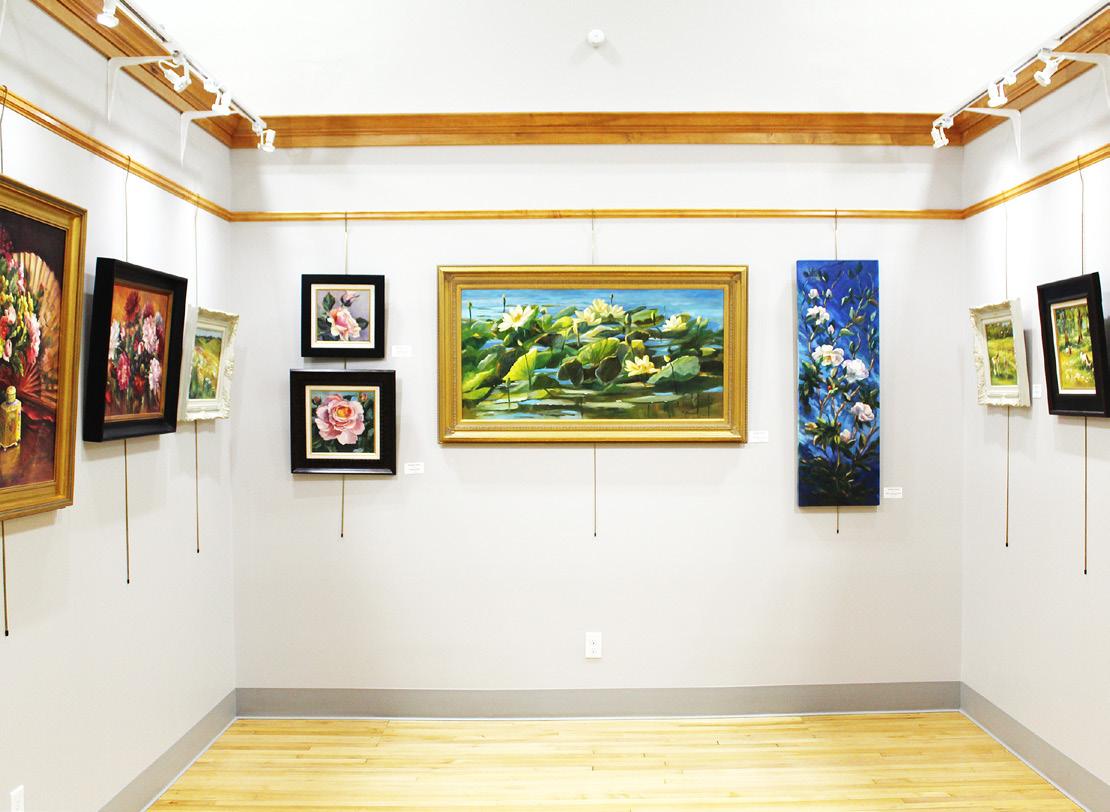



The veteran’s honor roll wall — listing names of local residents who served their country during wartime — wasn’t retired from duty when the museum moved in. It remains in its place of honor, above the original front entryway.
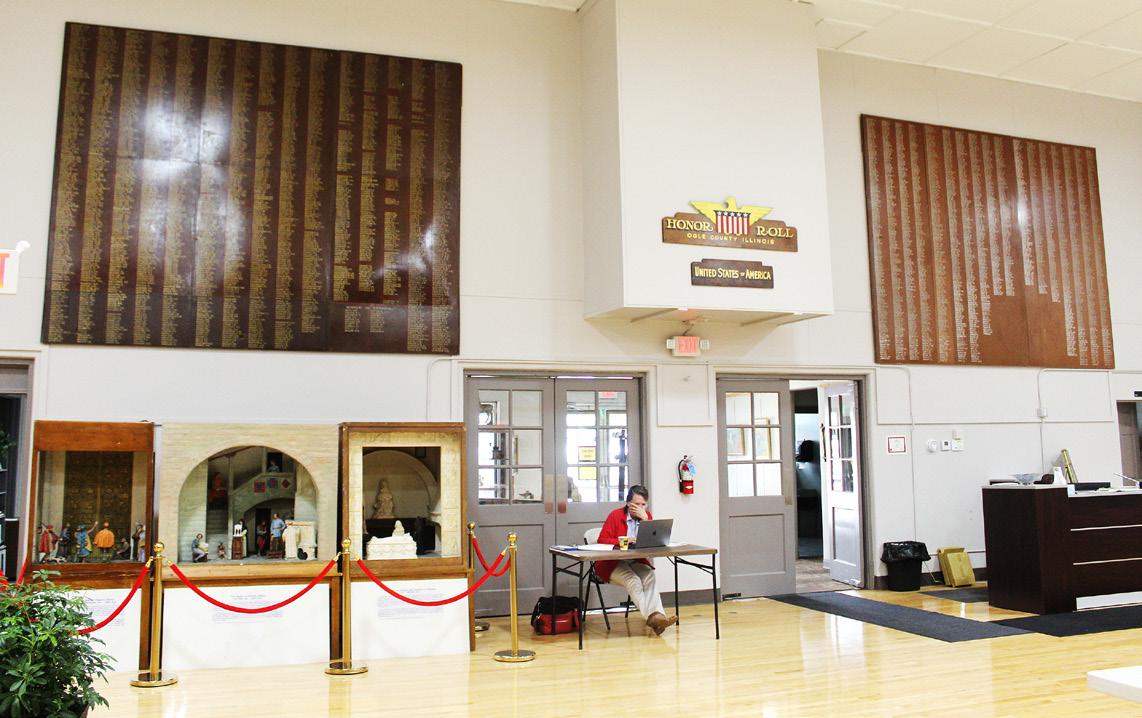

MUSEUM cont’d from page 30


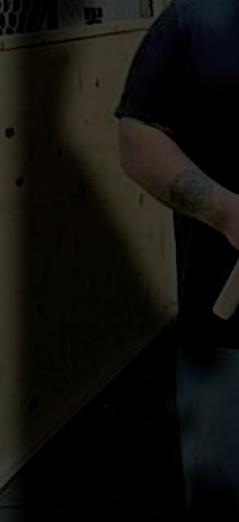


The museum’s genesis began six years ago, with an idea to preserve the Coliseum coming from Kent Lawrence, president of the Chicago-based A. Charles and Lillemore Lawrence Foundation. Lawrence, a second-generation Chicago attorney, has donated toward community initiatives throughout Ogle County in recent years, and provided the initial funding for the Coliseum museum. He and his wife, Kathy, have owned the Patchwork Inn, one block east of the museum, since 2009.
“[They] came out here and wanted to give back to the community and make a difference here,” Glenn said. “They wanted to be a part of this and give back to the community and invest in it.”


After a few years of planning, designing, and setting up a leadership structure — and contending with the setbacks dealt by the coronavirus pandemic during that time — the museum had its grand opening July 14, and judging by visitors’ reactions, the time it took to make the museum a reality was worth the wait, Glenn said. Not only were they amazed by the art, but they were happy see another attraction bringing more people to town.
MUSEUM cont’d to page 32



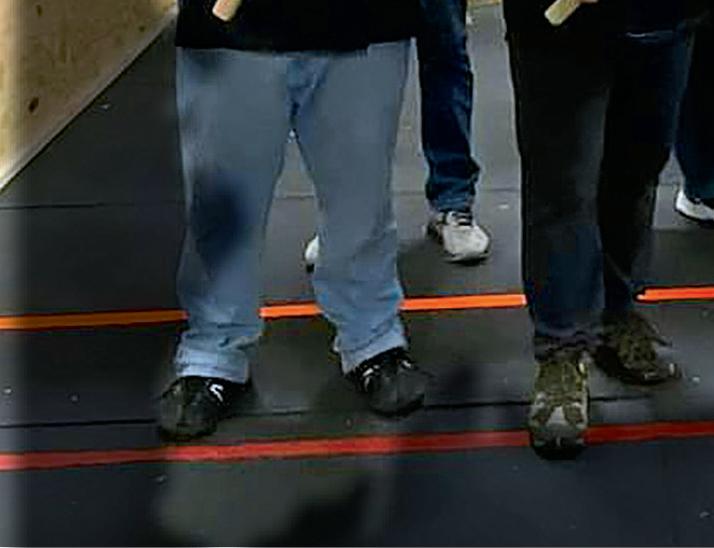

OREGON — The Coliseum in Oregon, now home to the Coliseum Museum of Arts, Antiques and America, is observing its centennial year in 2023 — but it’s not the only local institution with a birthday this year.

The catalyst for Oregon’s arts scene observes its quasquicentennial (125th anniversary) this year, and you can visit a gallery that celebrates the legacy left behind by a group of artists and writers who decided to build their nest near Oregon.
In 1898, a group of artists from Chicago set out to establish a seasonal colony where they could get their creative minds in harmony with nature. After a failed attempt to start one in Indiana, the group settled along the Rock River in Oregon and established the Eagle’s Nest Art Colony.
Lorado Taft, best known locally for creating The Eternal Indian concrete statue of Chief Black Hawk, was the most renowned of the colony’s founding members. Other charter members included sculptor Nellie Walker; artists Ralph Clarkson, Charles Francis Browne and Oliver Dennett Grover; writers Hamlin Garland, Henry Fuller and Horace Spencer Fiske; architect brothers Irving and Allen Pond; organist Clarence Dickinson; and University of Chicago administrator James Spencer Dickerson.
Eagle’s Nest members not only came to the colony to create their works, they also dedicated their time to share their art and educate local residents about the creative culture. They utilized Oregon’s businesses and professional services — grocery stores, doctors, churches — in an effort to get to know the local folks; and, in turn, promote the arts, be it painting, sculpting or writing.
The colony was located where Northern Illinois University’s Lorado Taft satellite campus is today, next to Lowden State Park. Some of the artists’ cottages remain intact, long after its last founding member, Clarkson, died in 1942.
The Eagle’s Nest legacy lives on at a gallery that features works created by colony founders. The gallery is located on the second floor of the Oregon Public Library, 300 Jefferson St., and is open from 9 a.m. to 8 p.m. Monday through Thursday and 9 a.m. to 4 p.m. Friday and Saturday. Go to oregonpubliclibrary.com/eagles-nest-art-gallery/ to learn more about the gallery and take a virtual tour.
You can read more about the group in the spring/ summer issue of Ogle County Living, at issuu.com/ shawmedia/docs/svm ocl 042423 (at right).
 — By Cody Cutter, Sauk Valley Media
— By Cody Cutter, Sauk Valley Media
“We had a really great celebration, and filled the place up,” he said. “People were excited, and it was one of those things where it just felt good. You knew that what you were doing was the right thing for the community, and it was strategic for tourism, too.”
The museum is a not-for-profit 501(c)3 organization, and accepts monetary and art donations. A tier-based membership program also is available. Glenn also seeks out grant opportunities and corporate sponsorship to help the museum.

One of the museum’s first permanent exhibit acquisitions was a trio of mini-sculpture “peep show” dioramas made by Lorado Taft. The dioramas depict scenes from ancient and Renaissance history, and were among some of Taft’s final works done at his Midway Studios in Chicago before his death in 1934, nearly two decades after he created the iconic Black Hawk statue. They were purchased by the Superior Public Library in Wisconsin in 1937, and remained there until acquired by the Coliseum museum in 2019.
The Coliseum Museum of Art, Antiques and Americana, 124 N. Fourth St. in Oregon, is open 10 a.m. to 5 p.m. Wednesday through Saturday. Find it on Facebook, go to cmaaa.org, email info@cmaaa.org or call 815-595-5810 for up-to-date exhibit information.
In August, featured artists included Craig Carpenter and Harry Nurmet. Carpenter’s paintings depict scenes of everyday life in Oregon — “He’s like the Norman Rockwell of Oregon,” Glenn said. Nurmet, a native of Estonia who fled his country during World War II, was an avid painter of flowers and still-life depictions of items from his native Estonia; he co-founded Oregon’s Eagle’s Nest Art Society in 1957, a group dedicated to celebrating and preserving the arts.
The first workshops hosted by the museum in August included a forensic art demonstration from retired Illinois State Police special agent Bethe Hughes, and an oil painting demonstration by Beverly Garcia of Grand Detour, whose works also were exhibited during the month.
As the museum continues to find its footing, Glenn is rounding up exhibits and planning classes and shows, tasks he’s not unfamiliar with. He was executive director of The Next Picture Show fine arts center and gallery in Dixon for a few years before retiring in 2021. That didn’t last long, though, and he was coaxed out of retirement in the spring of 2022 as the Coliseum’s first executive director.
Top: “Morning in Florence 1400” is one of three minisculpture “peep show” dioramas made by Lorado Taft on display at the Coliseum Museum of Arts, Antiques and Americana in Oregon. Here, a group of people admire the door of the Baptistery of Florence by Andrea Pisano of 1336. The dioramas were one of the museum's first permanent acquisitions, having previously been at the Superior Public Library in Wisconsin since 1937. Bottom: Tramp art, exhibited at the museum, was common throughout 19th Century America. Many of the intricate pieces found in this type of art came from discarded materials, giving art journalist Frances Lichten of the Pennsylvania Folklife magazine the inspiration in the 1950s to come up with a name for the artform.

Now, as the seeds planted a few years ago begin to grow, Glenn looks forward to helping the Coliseum take its place among Oregon’s long-standing legacy of celebrating the arts.
“There’s a lot of talent, and we want it to blossom here,” Glenn said. “We have some amazing collections. Some of these permanent collections are 50, 100, or 200 years old. You name it – there’s wood, there’s glass, there’s bronze, there’s pottery. It can take a long time to process the permanent collections. It’s amazing, and I think people are going to be shocked that something like this is here in Oregon.” n


Cody Cutter can be reached at 815-632-2532 or ccutter@shawmedia.




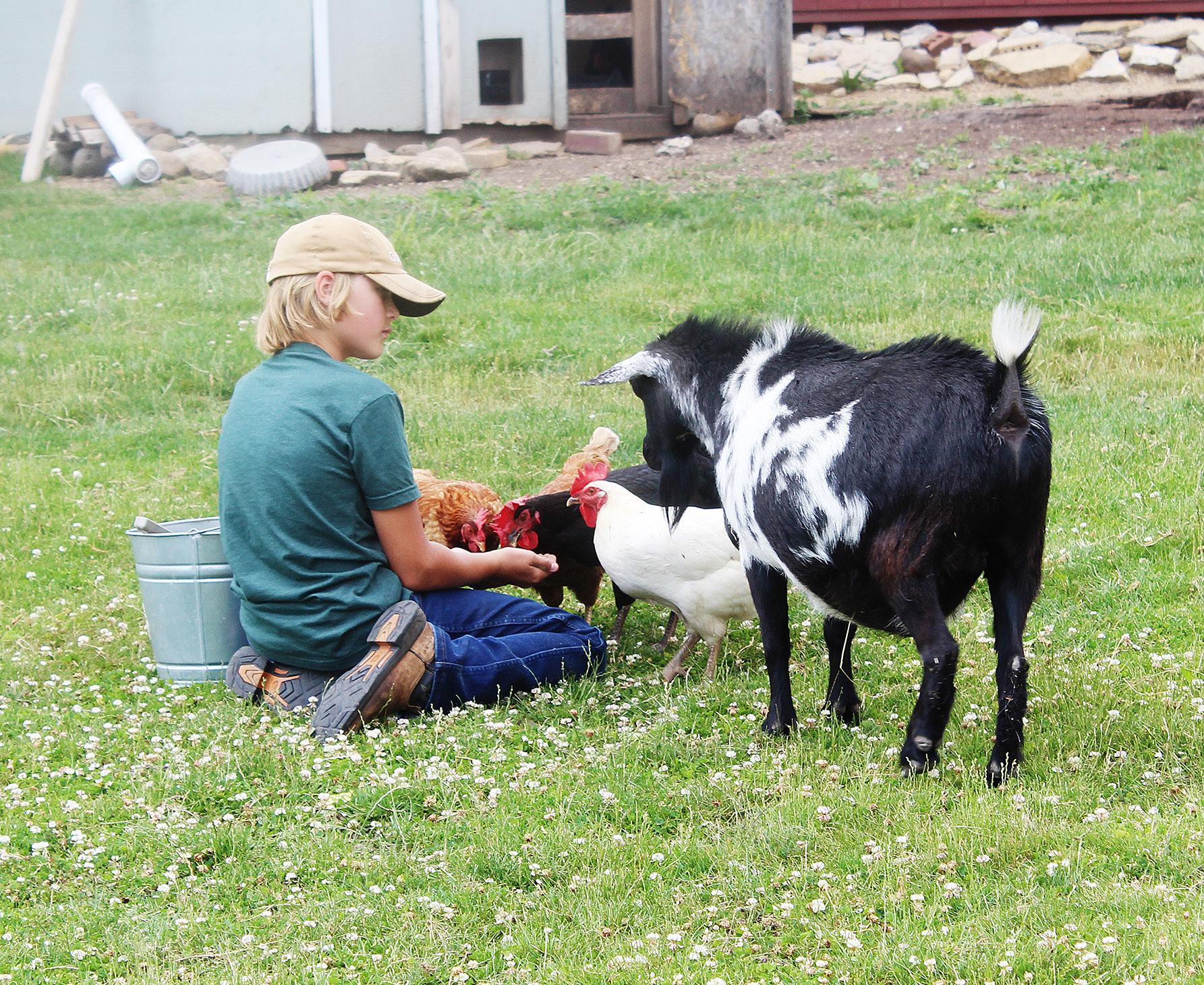 CODY CUTTER/CCUTTER@SAUKVALLEY.COM
CODY CUTTER/CCUTTER@SAUKVALLEY.COM




